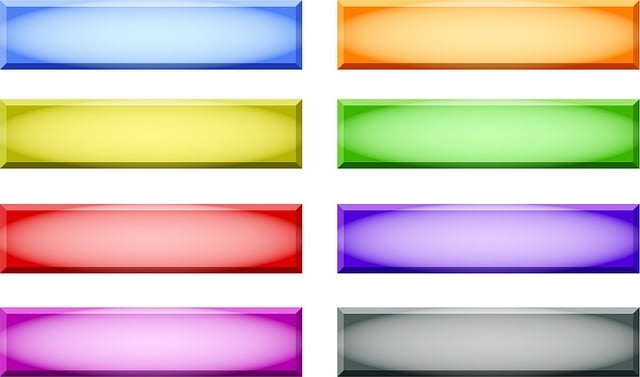UI design is about creating intuitive, user-friendly interfaces that guide users through digital experiences. Key elements include consistency, simplicity, feedback, and accessibility. Effective UI design uses clean layouts, clear navigation, and strategic visual hierarchy to enhance user engagement and satisfaction. Usability testing and adherence to accessibility guidelines are crucial for professional UI/UX design. Tools like Adobe XD, Sketch, Figma, and InVision facilitate the creation of wireframes and prototypes. Future trends include minimalism and responsive design for consistent user experiences across devices.
“Unleash your creativity with professional UI/UX design – the art of crafting intuitive, visually stunning user experiences. This comprehensive guide explores the core principles that drive modern UI design, highlighting the symbiotic relationship between UX and visual aesthetics. From understanding user interface (UI) fundamentals to mastering information architecture, you’ll discover best practices for creating engaging interfaces. We’ll also delve into accessibility, essential tools, and emerging trends, empowering designers to elevate their craft in today’s competitive digital landscape.”
Understanding UI Design: Principles and Key Elements

UI design is more than just aesthetics; it’s about creating intuitive, user-friendly interfaces that guide people through digital experiences. At its core, UI design focuses on the visual elements and interactive components that users interact with directly. These include buttons, forms, menus, icons, typography, and color schemes. Mastering these principles involves understanding how to arrange these elements in a way that feels natural and encourages user engagement.
Key elements of effective UI design include consistency, simplicity, feedback, and accessibility. Consistency ensures that users can predict how different parts of an app or website behave, making interactions more efficient. Simplicity focuses on eliminating clutter and keeping interfaces clean, allowing users to quickly grasp functionality. Feedback mechanisms like loading indicators and confirmation messages assure users their actions have been registered. Lastly, accessibility guarantees that interfaces are usable by people with disabilities, promoting inclusivity in design.
The Role of User Experience (UX) in Modern Design

In modern design, User Experience (UX) plays a pivotal role in shaping successful and user-friendly interfaces. It’s not just about aesthetics; UX focuses on creating seamless interactions that cater to users’ needs and preferences. By understanding user behaviors, designing intuitive navigation, and optimizing for various devices and platforms, UI/UX designers ensure that digital products are accessible, efficient, and enjoyable to use.
Effective UX design involves conducting thorough research, creating user personas, and prototyping to anticipate and address potential user pain points. This process results in interfaces that not only look appealing (UI design) but also provide a positive, satisfying experience for users. Ultimately, prioritizing UX ensures that digital solutions resonate with their target audiences, fostering engagement and driving user satisfaction.
Creating an Effective User Interface: Best Practices

Creating an effective user interface (UI) is paramount in professional UI/UX design. The best practices focus on simplicity and intuitiveness, ensuring users can navigate effortlessly. A clean layout, consistent design elements, and clear call-to-actions are essential to enhance usability. Utilizing familiar icons, keeping text concise, and prioritizing visual hierarchy helps guide users’ attention, making interactions more efficient.
Interactive prototypes and user testing are valuable tools for refining the UI design process. By gathering feedback and analyzing user behavior, designers can identify pain points and make data-driven improvements. Remember that a well-designed UI not only looks appealing but also serves as the backbone of a seamless user experience, fostering engagement and satisfaction.
Visual Hierarchy and Information Architecture Strategies

In UI design, visual hierarchy refers to the arrangement and order of elements on a screen, guiding users’ attention to the most important content first. Effective visual hierarchy strategies ensure that users can easily scan and understand the interface, enhancing their overall experience. Designers use techniques like size, color, contrast, and placement to create a natural flow that directs users through the UI, making essential information readily accessible.
Information architecture (IA) complements visual hierarchy by organizing content in a logical and meaningful structure. A well-designed IA ensures that navigation is intuitive, allowing users to find what they need efficiently. By aligning IA with visual design principles, UI designers create interfaces that are not only aesthetically pleasing but also highly functional. This strategy optimizes user engagement, as visitors can navigate with ease, leading to improved conversion rates and higher satisfaction levels.
Usability Testing: Ensuring Your Design Meets User Needs

Usability testing is an indispensable phase in professional UI/UX design, serving as a bridge between creative concepts and user satisfaction. By putting your designs in front of real users, you gain invaluable insights into how they interact with your interface. This process involves observing users completing specific tasks, gathering their feedback, and identifying pain points or areas for improvement.
Effective usability testing ensures that your UI design meets the needs and expectations of its intended audience. It allows designers to refine the user journey, enhance navigation, and optimize the overall user experience. Through iterative tests, you can make data-driven decisions, ensuring your UI design is not only aesthetically pleasing but also highly functional and intuitive for users.
Accessibility in UI/UX Design: A Comprehensive Guide

Accessibility in UI/UX design is a fundamental aspect that ensures digital products can be used by everyone, regardless of their abilities or limitations. It involves creating interfaces that are intuitive, understandable, and interactive for as wide an audience as possible. By adopting inclusive design principles, UI designers can prevent excluding individuals with disabilities, such as visual impairments, motor control issues, or cognitive differences.
A comprehensive guide to accessibility in UI/UX design begins with understanding the Web Content Accessibility Guidelines (WCAG). These guidelines provide a set of recommendations for making web content more accessible. For UI design, this translates into considerations like providing alternative text for images, ensuring sufficient color contrast, incorporating keyboard navigation, and allowing users to customize interface elements according to their needs. Moreover, it’s crucial to test designs with a diverse range of users, including those with disabilities, to gather feedback and identify areas for improvement.
Tools and Software for Professional UI/UX Designers

Professional UI/UX designers rely on a diverse set of tools and software to bring their creative visions to life. Essential in their arsenal are design applications like Adobe XD, Sketch, Figma, and InVision. These platforms enable designers to create wireframes, mockups, and prototypes with unparalleled precision and efficiency. Adobe XD, for instance, stands out for its seamless integration with other Adobe products, while Figma has gained popularity for its collaborative features, allowing teams to work in real-time on designs.
Beyond design tools, UI/UX professionals also utilize project management software such as Trello, Asana, and Jira to organize workflows and ensure smooth communication within their teams. Additionally, accessibility testing tools like WAVE and Axe help designers create inclusive interfaces that cater to a broader audience. These technological aids empower designers to deliver high-quality, user-centric experiences, making them indispensable in the realm of modern UI design.
Trends Shaping the Future of UI/UX Design

The future of UI/UX design is being shaped by several key trends that are revolutionizing the way we interact with digital products. One prominent trend is the increasing emphasis on minimalism and clean layouts, reflecting a shift towards simplicity and user clarity. Designers are moving away from cluttered interfaces, focusing instead on intuitive navigation and uncluttered designs that enhance user experiences. This approach not only improves visual aesthetics but also makes applications more accessible and easier to use for a broader audience.
Another significant trend is the rise of responsive design, driven by the ubiquitous nature of mobile devices. With more users accessing digital services through smartphones and tablets, UI/UX designers are creating adaptable interfaces that seamlessly transition across different screen sizes and resolutions. This ensures consistent user experiences regardless of the device, making it crucial for professionals to stay updated with the latest UI design principles tailored for mobile-first environments.
